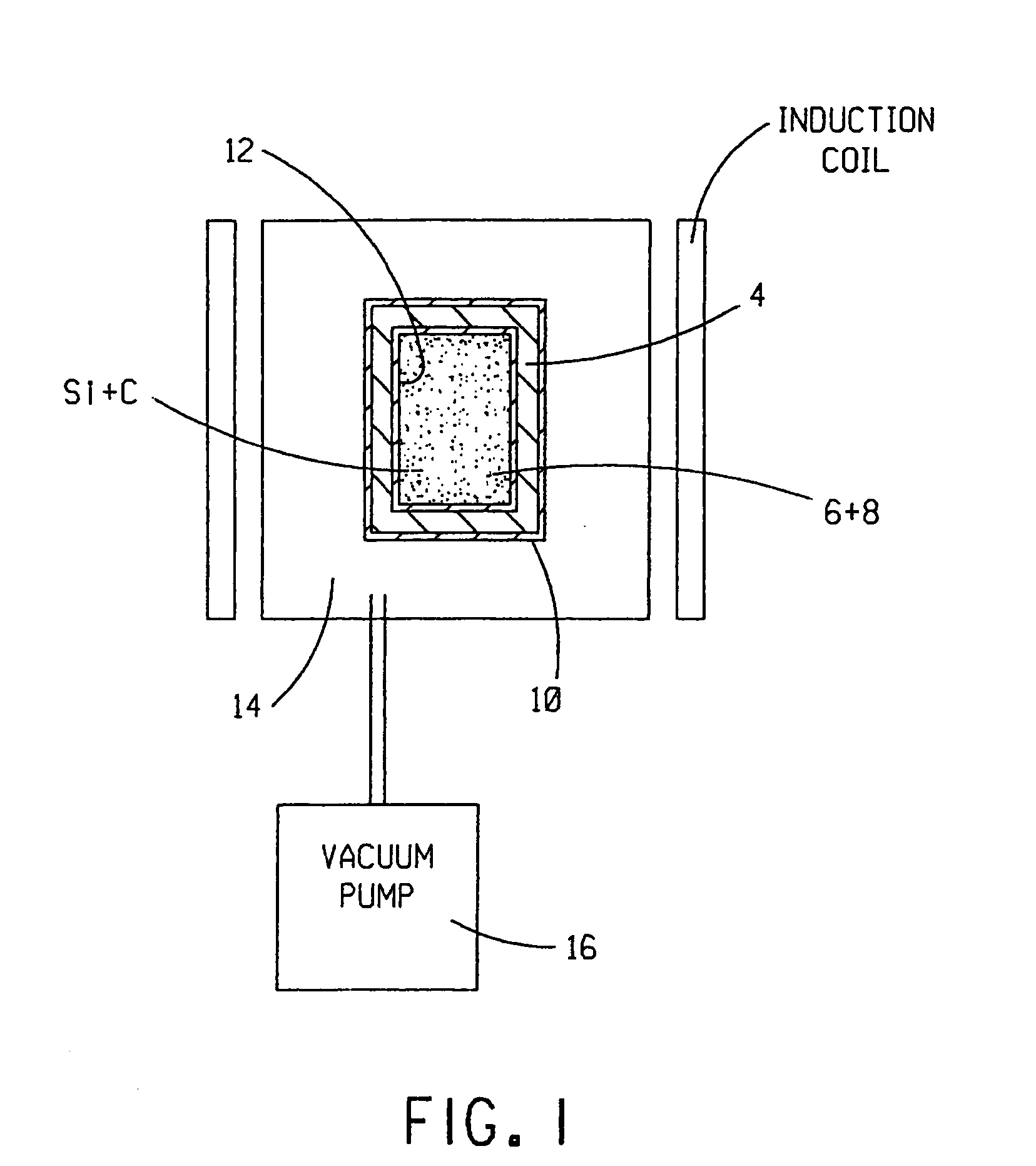Method for synthesizing ultrahigh-purity silicon carbide
a technology of polycrystalline silicon carbide and crystal growth method, which is applied in the direction of carbides, cellulosic plastic layered products, natural mineral layered products, etc., can solve the problems of reducing device performance, reducing the electrical properties of the substrate, and reducing the optimum purity of the material for sic semiconductor crystal growth. , to achieve the effect of improving the probability of crystal growth defects, and reducing the number of steps
- Summary
- Abstract
- Description
- Claims
- Application Information
AI Technical Summary
Benefits of technology
Problems solved by technology
Method used
Image
Examples
example 1
[0053]In an exemplary, non-limiting implementation of the invention, high-purity carbon (C) black powder and semiconductor grade silicon (Si) powder or granules are chosen for the starting materials. Non-limiting examples of suitable high-purity C black powders include THERMAX® and THERMAX ULTRA-PURE® carbon black, both available from Cancarb Limited Corporation, P.O. Box 310, Medicine Hat, Alberta Canada T1A7G1. In the U.S., THERMAX® and THERMAX ULTRA-PURE® are registered trademarks of Cancarb Limited Corporation, U.S. Trademark registration numbers 1,561,698 and 1,526,307, respectively.
[0054]The crucible 4 is formed from high-purity graphite, such as, without limitation, Grade SiC-6 Isotropic Graphite available from Toyo Tanso USA, Inc. of 2575 NW Graham Circle, Troutdale, Oreg. 97060. In one exemplary, non-limiting embodiment, the crucible 4 has an outer diameter of 6 inches, a height of 9 inches, a wall thickness of 0.5 inch and a threaded graphite cap (not shown) configured to ...
PUM
| Property | Measurement | Unit |
|---|---|---|
| vacuum pressure | aaaaa | aaaaa |
| temperature | aaaaa | aaaaa |
| temperature | aaaaa | aaaaa |
Abstract
Description
Claims
Application Information
 Login to View More
Login to View More - R&D
- Intellectual Property
- Life Sciences
- Materials
- Tech Scout
- Unparalleled Data Quality
- Higher Quality Content
- 60% Fewer Hallucinations
Browse by: Latest US Patents, China's latest patents, Technical Efficacy Thesaurus, Application Domain, Technology Topic, Popular Technical Reports.
© 2025 PatSnap. All rights reserved.Legal|Privacy policy|Modern Slavery Act Transparency Statement|Sitemap|About US| Contact US: help@patsnap.com


